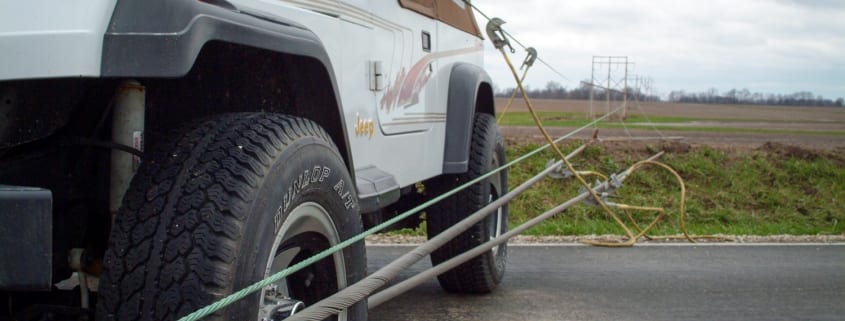Staying Safe if You’re in an Auto Accident Involving Electrical Poles or Lines
Being in an automobile accident is scary, especially if when you look out the car window and see a downed utility pole or power lines. In the aftermath of an accident, your instinct may be to get out of the car in order to distance yourself from further potential harm, to seek help or to check on others involved in the accident. But if there is a downed pole or lines, you need to resist that urge. The safest place is actually inside the car until utility and rescue crews arrive and ensure you can exit the car safely.
Damaged power lines may still be electrified even if you can’t see visible signs such as arcing or sparks. Always assume that power lines are energized.
Even if the lines are not touching your vehicle, you could be putting your life in danger by stepping out of the car. Despite surviving the accident, the moment your foot hits the ground you can become the path to ground for a lethal flow of electricity.
If you find yourself in a situation where you or someone else has hit a power pole and lines are down, the best thing to do is to stay in your vehicle and call 911. If you see well-meaning people who aren’t first-responders or utility workers approaching the vehicle, tell them to stay away and that you’ve called for help.
Despite what you see in TV car accidents, fires following a crash are rare, but they sometimes occur. If the car is on fire, you will need to exit the vehicle quickly – and safely. In these situations, experts recommend jumping clear of the car while making certain you don’t touch it and the ground at the same time. To help prevent accidental contact with the vehicle after you leave it, remove any loose clothing before opening the door. Open the door by the handle without touching the door itself. Stand with your feet together on the frame, tuck your hands and elbows in close to your chest and stomach, then hop off to a spot free of power lines. To prevent falling back against the vehicle or onto downed lines, know your limitations and don’t try to jump too far at once.
Once you are on the ground, continue to hop away keeping your feet together or shuffle your feet in slow, short strides. This sounds odd but it minimizes the risk of a voltage difference between your feet that could be dangerous under the right circumstances. Continue doing this until you are at least 20-30 feet away from the burning vehicle.
Electricity provides us with safety, convenience and connection, but it can also be dangerous. Our crews are trained to be everyday safe – to make smart choices around energy, and we want to help your family do the same. Visit everydaysafe.org for more electrical safety tips.




